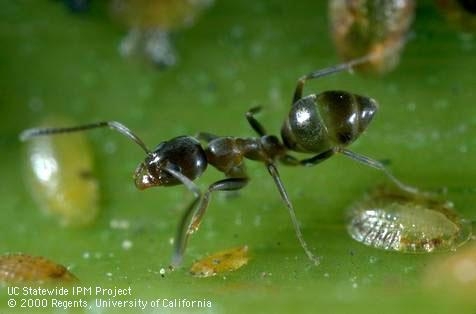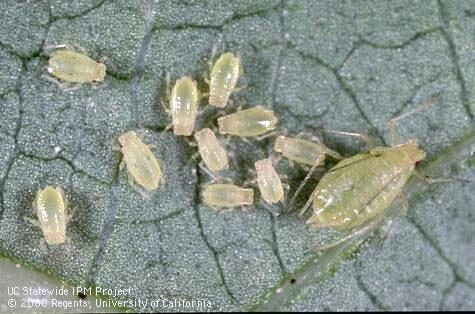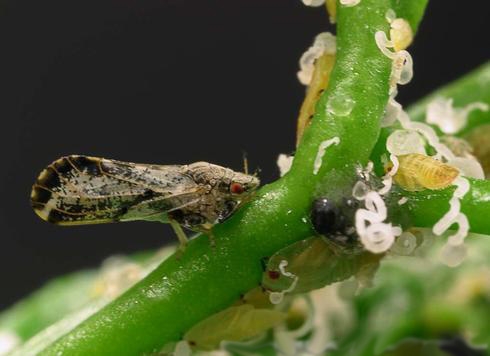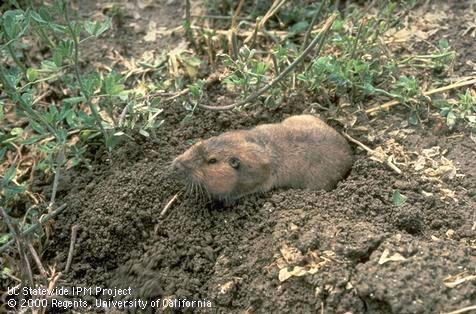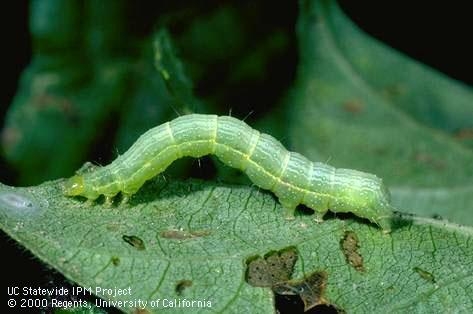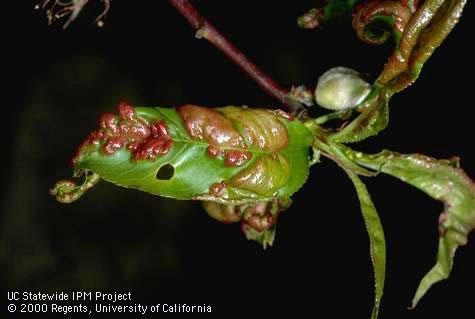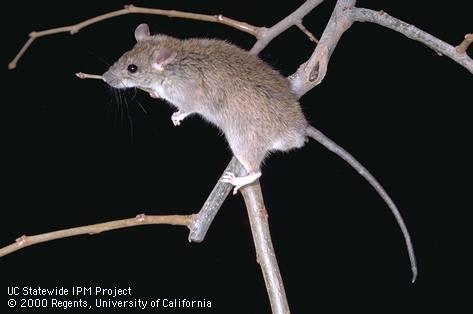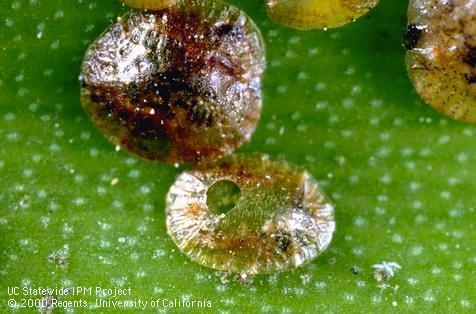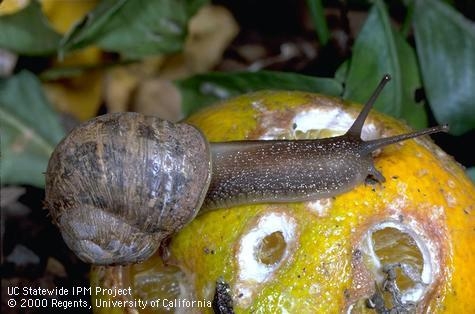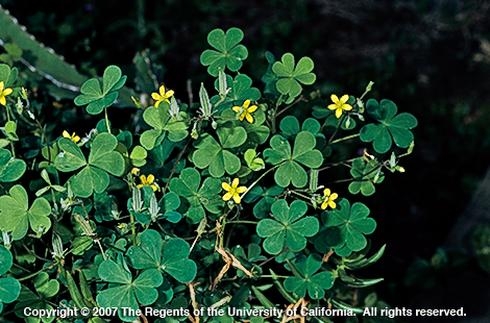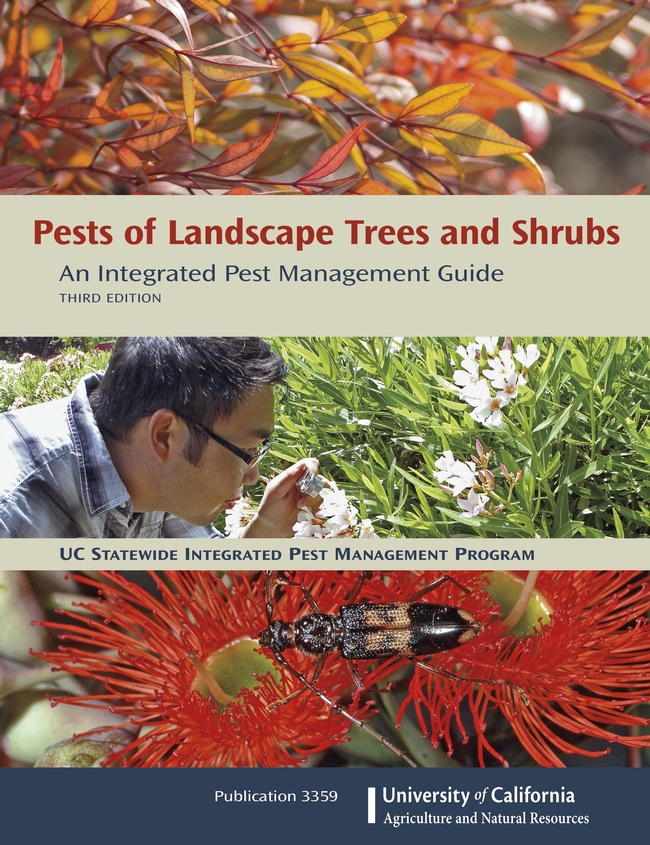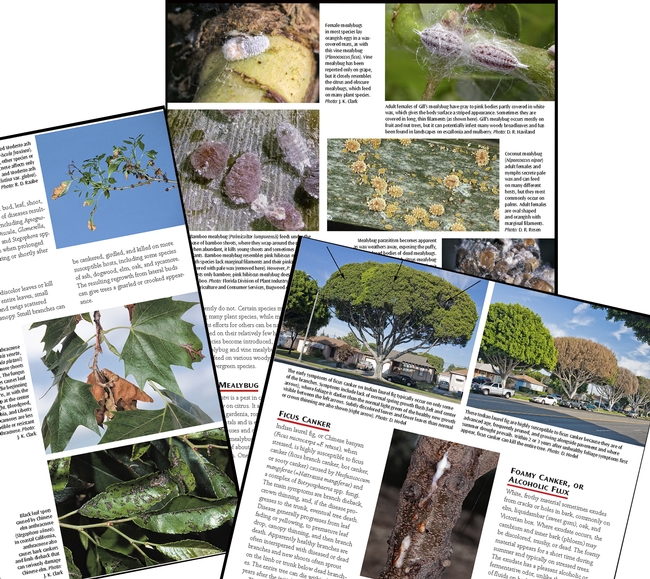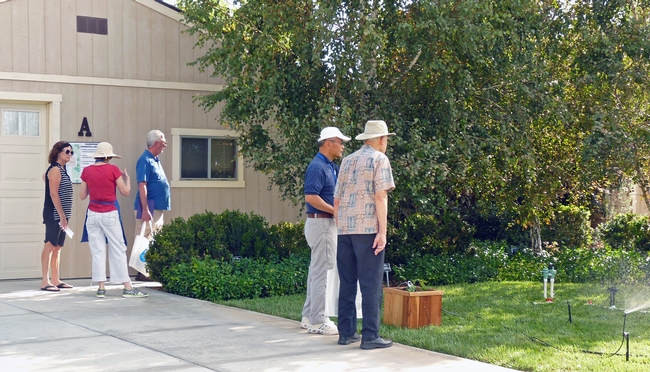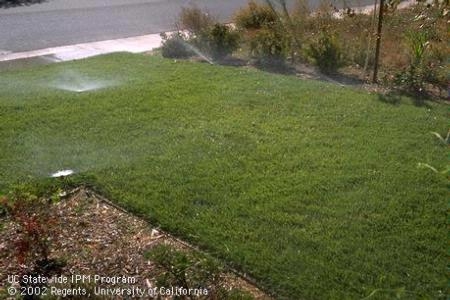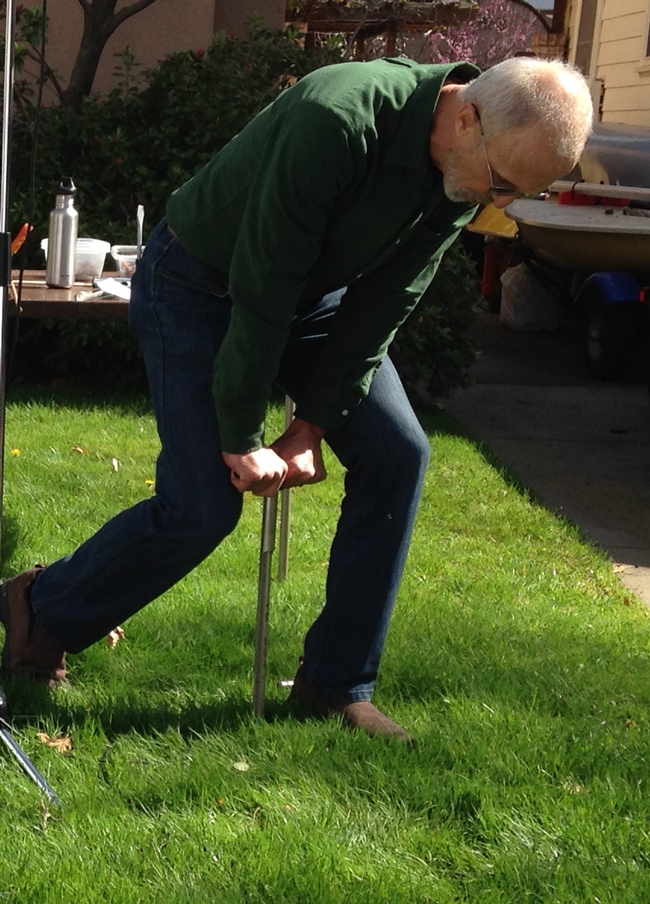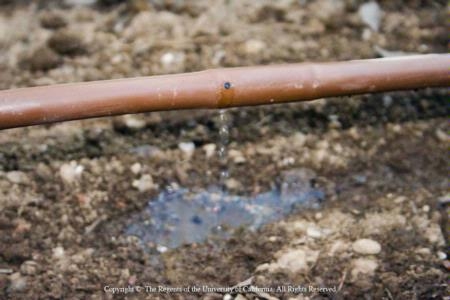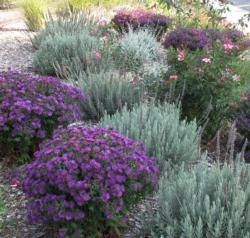Posts Tagged: landscape
Top 10 pests in gardens and landscapes and how to control them
Download the free booklet at the bottom of the page!
1. Ants
Most people deal with ants around their home at some point. Because most ants live outdoors, focus efforts on keeping ants from entering buildings by caulking entryways. Follow good sanitation practices to make your home less attractive to ants. Spraying ants inside the home will not prevent more ants from entering. Use baits to control the ant colony. Pesticide baits work by attracting worker ants who then take the poison back to the nest where the entire colony, including queens, can be killed. In the landscape, ants protect honeydew-producing pest insects from predators, so use sticky barriers or insecticide baits to keep ants out of trees and shrubs.
- Find out more at http://www.ipm.ucanr.edu/QT/antscard.html
2. Aphids
Aphids can curl leaves and produce sticky honeydew, but they rarely kill plants and you usually can wash them off with water. When aphid numbers get high, natural enemies such as lady beetles (lady bugs), lacewings, syrphid fly larvae, soldier beetles and others frequently feed on them, eliminating the need for pesticides. Protect these good bugs by avoiding the use of insecticides that can be toxic to a broad variety of insects. Ants protect aphids from these natural enemies, so keep ants away from your garden as well. When pesticides are necessary, use less toxic products such as insecticidal soaps and oils.
- Learn more about controlling aphids here: http://www.ipm.ucanr.edu/QT/aphidscard.html
3. Asian citrus psyllid and Huanglongbing disease
The Asian citrus psyllid (ACP) and the deadly bacterial disease it spreads, Huanglongbing (HLB), threaten citrus trees in backyards and on farms. There is no cure or effective control method for HLB disease. All types of citrus—including oranges, grapefruit, lemons, and mandarins—are affected as well as a few closely related ornamentals. ACP and HLB have already devastated the Florida citrus industry, and now that it is in the Western U.S. it is threatening the California citrus industry as well.
- See where the outbreaks are in California with our helpful Asian citrus psyllid website: http://ucanr.edu/sites/ACP/Distribution_of_ACP_in_California/
- Contact your agricultural commissioner's office, or call the California Department of Food and Agriculture (CDFA) Exotic Pest Hotline at 1-800-491-1899 to confirm a find. Learn more about ACP here: http://www.ipm.ucanr.edu/QT/asiancitruscard.html
4. Gophers
Gophers are small burrowing rodents that feed on roots of many types of plants. A single gopher can ruin a garden in a short time, and gopher gnawing can damage irrigation lines and sprinkler systems. In lawns, their mounds are unsightly and interfere with mowing. Early detection is critical to prevent damage. Use both traps and underground fencing to manage gopher problems. Toxic baits are available but can pose threats to wildlife, pets, and children, especially in backyard situations.
- Learn more about protecting your garden and landscape from gophers here: http://www.ipm.ucanr.edu/QT/gopherscard.html
5. Leaf-feeding caterpillars
Caterpillars, which are the larvae of butterflies and moths, damage plants by chewing on leaves, flowers, shoots, and fruit. Caterpillars in fruit or wood can be difficult to manage because they are hidden most of their life and can cause serious damage even when numbers are low. However, many plants, especially perennials, can tolerate substantial leaf damage, so a few leaf-feeding caterpillars often aren't a concern. Handpicking and beneficial predators and parasites often provide sufficient control. Look for feeding holes, excrement, webbed or rolled leaves, caterpillars, eggs, and good bugs.
- Learn more here:http://www.ipm.ucanr.edu/QT/lfcaterpillarscard.html
6. Peach leaf curl
Peach leaf curl is a fungal disease that affects only peach and nectarine trees. Distorted, reddened foliage in the spring is a distinctive symptom. New leaves and shoots thicken and pucker and later may die and fall off. An infection that continues untreated for several years can lead to a tree's decline. To prevent peach leaf curl, treat peach and nectarine trees with a copper fungicide every year after leaves fall. After symptoms appear in the spring, any treatment will not be effective. When planting new trees, consider buying peach tree varieties that are resistant to the disease.
- To learn more about preventing peach leaf curl click here: http://www.ipm.ucanr.edu/QT/peachleafcurlcard.html
7. Rats
Rats eat and contaminate food, garden produce, and fruit, and transmit diseases to humans and pets. Manage rats by removing food and shelter, eliminating entryways into buildings, and trapping. Snap traps are the safest, most effective, and most economical way to trap rats. For Norway rats, place traps close to walls, behind objects, in dark corners, and in places where you have found rat droppings. For roof rats, place traps in off-the-ground locations such as ledges, shelves, branches, fences, pipes, or overhead beams. Ensure traps are out of reach of children and pets.
- Learn more about preventing and controlling rats here: http://www.ipm.ucanr.edu/QT/ratscard.html
8. Scales
Scale insects suck plant juices and are pests of many trees and shrubs. Infestations can cause yellowing or premature dropping of leaves, sticky honeydew, and blackish sooty mold. Plant parts can distort or die back, depending on the species and abundance of scales. Most plants tolerate low to moderate numbers of scales. Provide plants with proper cultural care, especially irrigation. Encourage scale predators such as lady beetles or lacewings and look for parasite emergence holes in scale covers. Use sticky barriers or insecticide baits to selectively control scale-tending ants. Consider replacing problem-prone plants because most scales are highly specific to certain plants.
- Learn more about controlling scale populations here: http://www.ipm.ucanr.edu/QT/scalescard.html
9. Snails and slugs
These slimy mollusks emerge from hiding at night and chew holes in leaves and flowers of many succulent garden plants and fruit. Management requires a vigilant and integrated approach that includes eliminating moisture and hiding spots, trapping, setting up barriers, and handpicking. Regularly remove snails from shelters you can't eliminate such as low ledges on fences, undersides of decks, and meter boxes. Place traps in your garden and dispose of trapped snails and slugs daily. Reduce moist surfaces by switching to drip irrigation or watering in the morning rather than later in the day. Consider snail-proof plants such as impatiens, geraniums, begonias, lantana, nasturtiums, and many plants with stiff leaves and highly scented foliage such as sage, rosemary, and lavender.
- Learn more about controlling snails and slugs with and without pesticides in your garden here: http://www.ipm.ucanr.edu/QT/snailsslugscard.html
10. Weeds in landscapes
Prevent weed invasions in new beds with good site preparation. Keep weeds out with an integrated program that includes competitive plants, mulches, and hand removal. Be particularly vigilant about removing aggressive perennial weeds. You rarely should need herbicides in established landscape plantings. Mulches prevent weed seed germination by blocking sunlight. Remove small weeds by hand before they flower and set seed. Use shallow cultivation or hoeing to remove annual weeds from ornamental plantings. Only use herbicides for special-problem situations before establishing new plantings or for difficult-to-control perennial weeds.
- Learn more about controlling weeds in your landscape here: http://www.ipm.ucanr.edu/QT/landscapeweedscard.html
To see all of the University of California's Statewide Integrated Pest Management Program's information on home, garden, and landscape pests, visit http://www.ipm.ucanr.edu/PMG/menu.homegarden.html
For other short pest “Quick Tips” like the ten above, see http://www.ipm.ucanr.edu/QT/
To read even more in-depth, peer-reviewed information on many other common home and landscape pests in California, see the Pest Notes series at http://www.ipm.ucanr.edu/PMG/PESTNOTES/index.html
Download your free UC IPM Quick Tips Booklet of the Top Ten Pests in Gardens and Landscapes and How to Control Them with the link below!
What’s attacking your landscape? Read all about it in the newly released book from UC ANR
What do Asian citrus psyllids, Bagrada bugs, brown marmorated stink bugs, palm weevils, and polyphagous shothole borers have in common? Not only are they invasive pests relatively new to California, but they have also been added to the newly revised ANR publication, Pests of Landscape Trees and Shrubs.
Now in its third edition, this integrated pest management (IPM) how-to guide is a comprehensive resource for arborists, home gardeners, landscapers, parks and ground managers, and retail nurseries. It contains solutions for hundreds of insects, mites, nematodes, plant disorders and diseases, and weeds that can damage California landscapes.
Dozens of pests new to this edition include those affecting azaleas, camellias, camphor, eucalyptus, hibiscus, liquidambar, maples, oaks, olive, palms, pines, roses and sycamores.
A very important part of pest management is designing a pest-tolerant landscape, choosing the right plants for the location, and maintaining the landscape with appropriate irrigation, fertilizer, and other cultural practices to keep plants healthy.
These practices are featured along with information on how to:
- prevent pest problems and plant damage
- monitor for pests efficiently
- conserve natural enemies to provide biological control, and
- selectively use pesticides in ways that minimize adverse impacts
Presenting the practical experience and research-based advice of more than 100 University of California experts and landscape professionals, this 437-page book includes more than 600 high-quality color photographs and line drawings to help you recognize important pests and key natural enemies, causes and symptoms of plant damage, and pest biology and control techniques.
Problem-Solving Tables include the specific pests for each of over 200 genera of trees and shrubs, referring to the pages with their photographs and management solutions.
Pests of Landscape Trees and Shrubs: An Integrated Pest Management Guide, Third Edition, can be ordered through the ANR catalog. For more information, see the UC IPM website.
South Coast REC research helps landscapers plan for the next drought
Covering the ongoing drought, Peter King wrote a story in the Los Angeles Times about different approaches being taken around the state to manage with less water. From desalination facilities to solar-powered telemetry towers to help improve irrigation efficiency in an almond orchard to water storage projects, the former UCOP news director highlighted a number of efforts to plan for a drier future. He ended up at UC ANR's South Coast Research and Extension Center, looking at the landscape project built for studying plant types and urban water use.
“Three beige classrooms have been outfitted and landscaped to resemble a row of suburban homes, complete with white picket fences,” King wrote. “They are not-so-poetically identified as residences A, B and C. A offers conventional landscaping: fescue lawn, birch trees and boxwood. B's plants and grasses are better suited to a Mediterranean climate. C's are natives: sedge grasses, manzanita and sycamores.”
As the drought persists, requests from municipal landscapers and private gardeners to tour the project have picked up, Tammy Majcherek, a UCCE community educator in Orange County, told King.
“I am not sure the old mindset has changed,” she said, “but I think maybe we are beginning to turn the corner.”
Members of the public will have a chance to tour the faux neighborhood on Sept. 26 from 9 a.m. to 2 p.m. during the Urban Landscape & Garden Education Expo at South Coast Research and Extension Center. The event is free. Visitors will get to learn about drought friendly plants and how to reduce landscape water use. For more information, visit http://screc.ucanr.edu/?calitem=272378&g=68933.

SCREC landscape expo Sept. 26
6 ways to reduce water use without killing your garden
For homeowners, there are six key things to do to conserve landscape water, says Karrie Reid, UC ANR Cooperative Extension advisor, in San Joaquin County. Reid gives the following six tips:
- Tune up your irrigation system right away. When water is efficiently and accurately applied, less water is needed to keep plants healthy. Spray heads can get knocked out of alignment and end up spraying the sidewalk, street or driveway and running to the gutter. Check all spray heads to ensure they are hitting the target and twist those that aren't back into place. Some heads have adjustable angles of spray, which can be fixed with a tool available at a hardware store. Look for cocked heads, which spray water up into the air, and sprays blocked by grass or those that have sunk below grade. Make sure all spray heads are made by the same manufacturer and are from the same line so they deliver water at the same rate, otherwise they'll leave dry spots. Low-volume spray heads or rotators deliver water more efficiently.
- Water the whole root zone. On allowed watering days, irrigate until the water reaches 12 inches deep for grass, 12 to 18 inches for shrub and perennials, and 12 to 24 inches for trees. This provides a greater reservoir of water for the plants to draw from, and many will be able to get by on weekly, twice-monthly or monthly irrigation if they are conditioned to send their roots deep. To check the watering depth, use a soil probe or push a long screwdriver into the ground. The depth it reaches easily indicates how deeply the water has infiltrated.
- Avoid wasting water to runoff. If water runs off before the watering cycle finishes, split the cycle time. Set the timer to water in two, three or even four cycles at least an hour apart to allow the water to soak in. To ensure water isn't flowing below the root zone, check the watering depth after each cycle.
An irrigation scheduling worksheet created by Loren Oki, UC ANR Cooperative Extension specialist in the Department of Plant Sciences at UC Davis, and Darren Haver, UC ANR Cooperative Extension advisor in Orange County, helps fine tune irrigation timing. The worksheet is available for free online at the Center for Urban Horticulture website http://www.ccuh.ucdavis.edu.
- Switch to inline drip tubing for beds. Drip irrigation applies water where it is needed with less loss to the air. Be sure to lay tubing so water reaches plants' entire root zone.
- MULCH, MULCH, MULCH. Adding 3 or 4 inches of organic material such as wood chips, shredded bark or bark nuggets will improve soil health while retaining water and lowering stress on your plants. Place mulch away from the street curb to prevent heavy rains from washing it into the storm drains.
- Replace water-needy plants with low water users in the fall. All plants use a lot of water to get established when they are planted in the spring and summer, and for about a year after. Trees may need extra water for several years until their roots have grown well into the surrounding soil. By waiting until temperatures cool in the fall to plant, it will be easier to abide by the water restrictions. It's also important to use hydrozoning, which means placing plants with the same water needs on the same valve. Otherwise, irrigating to the thirstiest plants on that station will give other plants more water than they need.
How to Attract Bees, Butterflies and Birds: CCUH Workshop at UC Davis
So you want to create a sustainable landscape in your backyard. You want to create a living landscape that attracts bees, butterflies and birds. You...
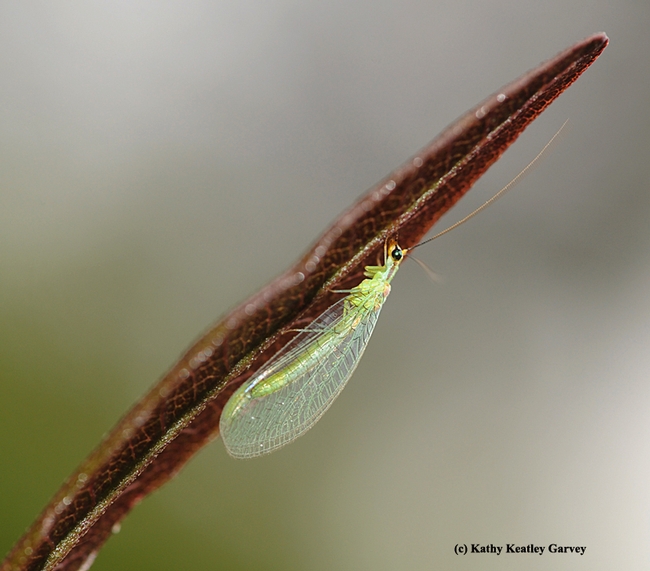
The lacewing is a beneficial insect in the garden. (Photo by Kathy Keatley Garvey)
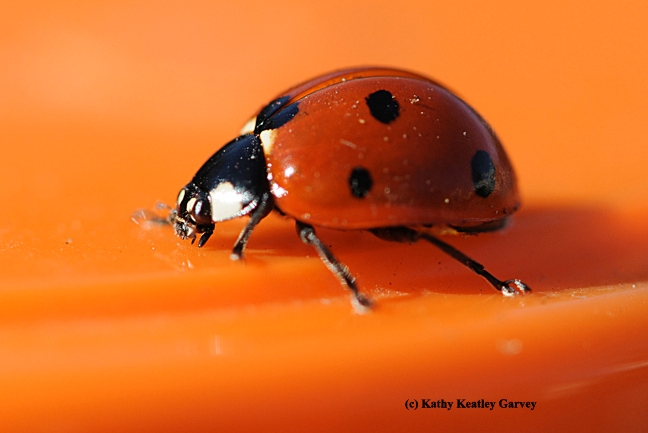
A lady beetle, aka ladybug, will eat aphids and other soft-bodied insects in your garden. (Photo by Kathy Keatley Garvey)


